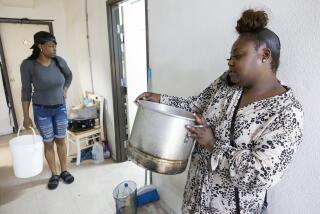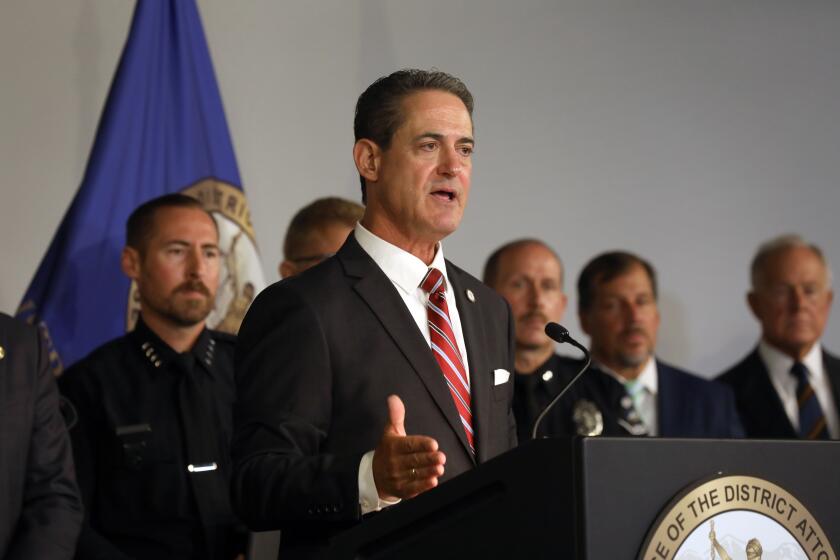Column: An empty hospital. An exploding homeless crisis. Are you thinking what I’m thinking?
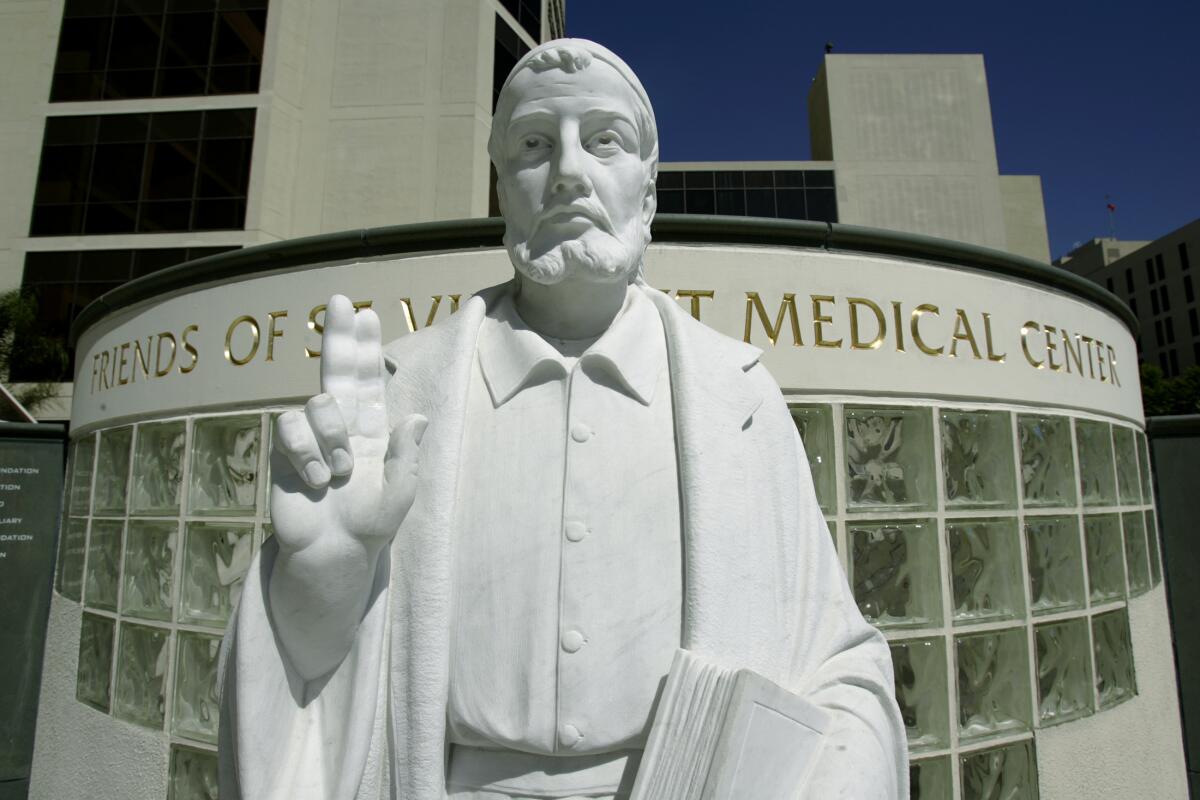
It was Sunday past and Patricia McVerry, a West L.A. resident and self-described newspaper addict, was reading the L.A. Times when she came upon the story of St. Vincent Medical Center’s impending closure after roughly 150 years in business.
“I said to my husband, ‘How come they can’t think about using this for some of our homeless population?’” said McVerry, who emailed me her pitch. She asked me to “run this up the flagpole” with local officials and she thanked me in advance for “noodling this idea.”
The first thing her proposal made me noodle was how great it is that so many people are engaged in looking for solutions to the humanitarian crisis of our time. We need all the good ideas we can get.
Sure, Gov. Gavin Newsom is on a “homeless tour” after asking for another $1 billion to finance solutions, and his state-appointed commission just turned in a couple of dozen recommendations, including one that would require cities and counties to figure it out sooner rather than later. So you can cross your fingers, light a candle and pray that 2020 is the year things begin to turn around.
But private citizens are getting tired of waiting for public officials to take the lead, and they often send me their own ideas. Some of them are pretty good. I routinely hear, for example, from readers who spot vacant buildings here or there and wonder why they can’t be taken advantage of at a time when roughly 60,000 people are homeless in L.A. County.
Here’s one that came in just before Christmas:
“I just wanted to ask if you’re aware of an abandoned and very large 5 floor LA city-owned property that is at 401 North Ave 19,” wrote Marty Bracciotti. “I see this building every morning on my way to the civic center and wonder what’s up ... It makes me wonder how many other buildings LA has that can be converted to shelter the homeless and help this exploding problem.”
That particular building was once the Lincoln Heights Jail. I don’t know what its current status is, but I did find a 2016 document stating that the city “seeks potential development partners” in turning the 229,000 square feet into offices, a school or lofts.
Do we need any of those things as much as we need affordable housing?
The answer is no.
And by the way, we don’t need lawsuits like the one aimed at derailing the 100-bed homeless shelter already approved for an unused plot of land near the Mulholland Fountain on Riverside Drive at the eastern edge of Griffith Park. A group of nearby residents and property owners argue that the city skirted local and state regulations in approving the temporary housing facility.
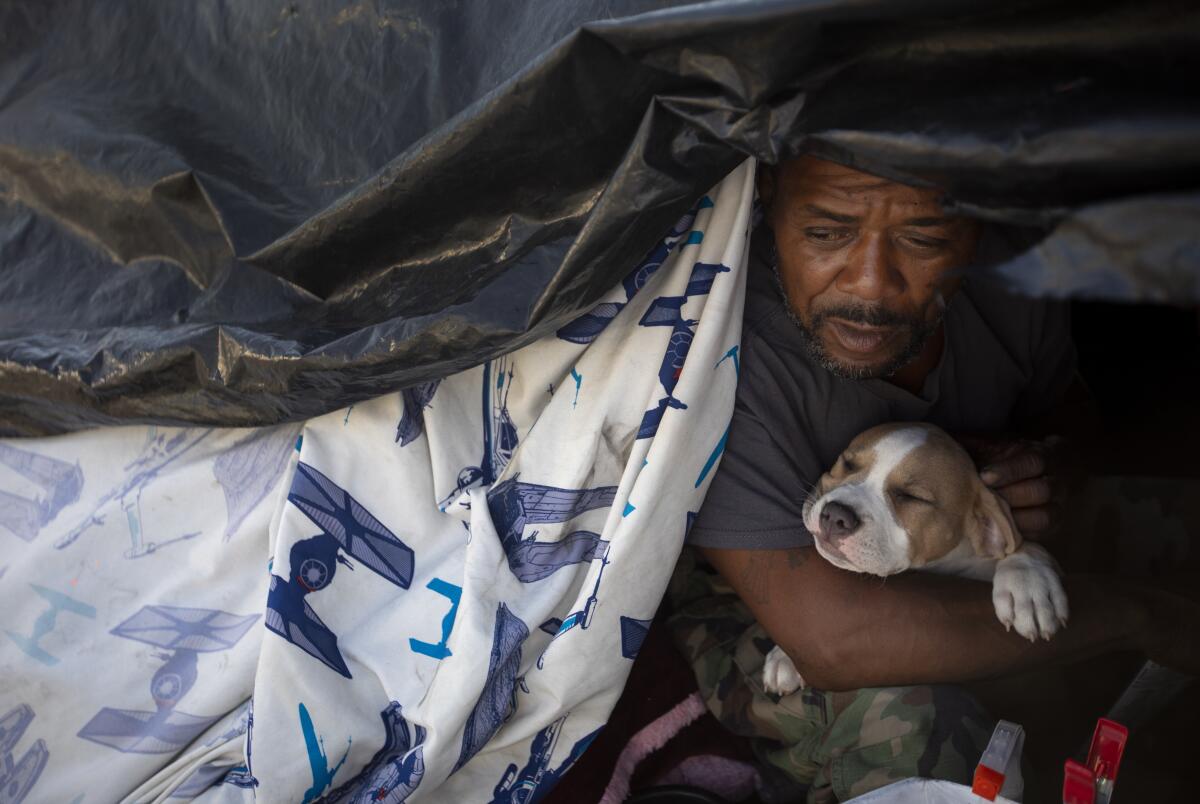
I lived in that neighborhood for many years, so I know it well. There are no homes particularly close, and I can’t think of a better location for such a shelter, especially given all the homeless people now living on nearby streets and along the L.A. River.
We have an emergency, folks. Quit complaining about the problem without being part of solving it.
But let me get back to St. Vincent.
From the intersection of 3rd and Alvarado in Los Angeles, home of the 366-bed hospital, you could go in any direction and find a homeless encampment before traveling far.
So the pending closure of the hospital, founded in 1858 by the Daughters of Charity to serve the poor and currently owned by a nonprofit that’s in bankruptcy proceedings, seems like both a tragic story and a great opportunity.
“There are a lot of private rooms, each with a bathroom,” McVerry said her email after she saw my colleague Alejandra Reyes-Velarde’s story on the hospital running out of prayers after more than 150 years in business.
“There are offices in which social workers could provide assistance to those who need help,” McVerry went on. “It wouldn’t even have to be limited to the homeless but could provide housing to seniors or others who can pay rent but not at LA rent levels.”
When I spoke to McVerry, a tax attorney, she said she had read about how long it has taken to build supportive housing units (up to three years) and how much they have cost ($500,000 or so per unit). She just wondered if the hospital rooms could provide readily available housing at a much lower cost.
Not an easy question to answer.
St. Vincent is owned by Verity Health System, which took the hospital into bankruptcy in 2018. A judge approved the closure last week after a sale fell through. Among the bankruptcy creditors is the hospital system’s former management company, Integrity Healthcare, which is controlled by entrepreneur-physician Patrick Soon-Shiong’s company NantWorks. Soon-Shiong also owns the L.A. Times.
John Romley, a health economics professor at USC, said the current valuation of the building and equipment at St. Vincent is $41 million. Let’s say for argument’s sake that’s what you’d have to pay to buy it: Divide it by 366 beds and you get $112,000 per unit, which is about $400,000 less than L.A. has been paying for permanent supportive housing units. Of course, the rooms are small, without kitchens, and it’s hard to quickly assess the cost of turning hospital rooms into housing units. But hey, we’re in crisis here.
And maybe you wouldn’t have to do much. Thousands of L.A.’s homeless people suffer serious mental illness, and there’s long been a shortage of short- and long-term facilities to treat them. The number of homeless people dealing with physical illness and addiction is also in the thousands, and more than 1,000 homeless deaths were recorded last year in L.A. County.
How can you have that many people dying, some of them practically on St. Vincent’s doorstep, and not find a way to keep the hospital open as an acute care or addiction rehab facility of some type? And if that were to happen, that could save the jobs of hundreds of current employees whose fate is unknown.
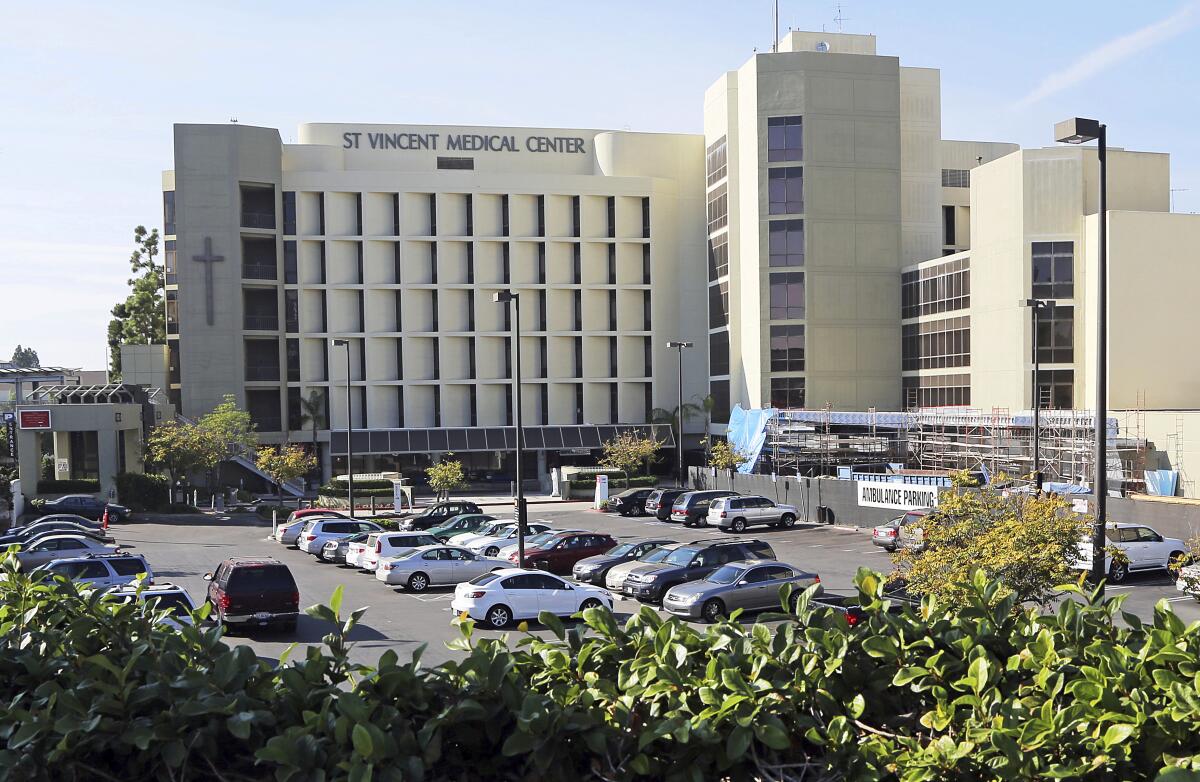
When I texted L.A. Mayor Eric Garcetti Monday night to ask about the chance of snapping up St. Vincent, he said he’d just gotten that same question in a supermarket parking lot. The problem, he said, is that the city and county don’t have enough cash sitting around to buy the place.
But Garcetti said it wasn’t out of the question for the city, the county and the Los Angeles Homeless Services Authority to jointly lease or rent St. Vincent, and his staff is researching the possibility. It’s not clear whether bankruptcy proceedings, still not completed, would complicate such an agreement, nor is anything about the fate of the building clear at this point.
So it may be a long shot.
But like I’ve been saying, we have to be more creative, double up on what works and try new things as well. That means taking stock again of every available asset and running wild ideas up the flagpole now and again,
The closure of a local institution like St. Vincent, with its history of compassionate care, is hard enough to take. Seeing it boarded up for years to come, while people live and die on nearby streets, would be even more tragic.
And Verity Health may be thinking along the same lines. When I asked the hospital company for a comment, I got this from CEO Rich Adcock:
“Following its closure, Verity will pursue an alternative sale path for St. Vincent Medical Center — it is our hope that a future buyer will be able to identify a use that honors the facility’s decades-long legacy of service to the community.”
More to Read
Sign up for Essential California
The most important California stories and recommendations in your inbox every morning.
You may occasionally receive promotional content from the Los Angeles Times.



